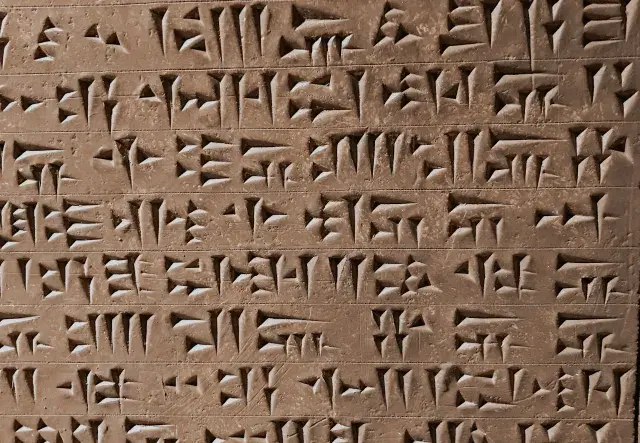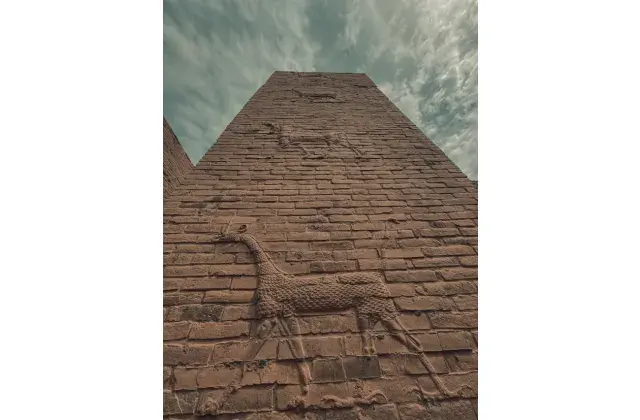Invention of Cuneiform (3400 BCE)

‘‘The first written words started here’’ is the inscription on a plaque installed in front of the ruins of the Uruk ziggurat in present day Iraq, which is a tourist attraction for many around the world. It was in this great Sumerian city where around 3400 BCE Cuneiform, the earliest form of writing was invented. The Sumerians used local materials to convey complex ideas into written forms, such as clay to use as tablets and reed to use as writing wedge-shaped tools. Abstract symbols and drawings were pressed into wet clay tablets with the wedge-shaped tool by professional scribes of both men and women.
Historians emphasise that in those early societies symbolism held significant power and meanings, being both valued and extensively utilised to an exceptional extent. Initially, Cuneiform writing was fundamentally numerate and used for quantification, served economic and administrative purposes but gradually expanded to encompass literature, religion, law and more. The Sumerians' development of cuneiform writing enabled record-keeping and legal documentation, emphasising the importance of communication and documentation in civic life. For example, a bowl and a human head were drawn on clay tablets to show food rations for people. The early communities in Sumer, realised the need to keep records of their daily civic lives in a way that could contain more information than one can possibly remember. These clay tables helped to store, organise, manage and archive information; in other words they acted as modern day databases. Additionally, with the emergence of writing, there also came an unprecedented interconnectedness through exchanging ideas and cultures in written forms.
The invention of writing in Sumer marked a pivotal moment in human history, contributing significantly to the advancement of human civilization and world culture. The Sumerian script of Cuneiform endured more than 3000 years, used by scribes of many cultures of different languages as a vehicle of communication from Iran to the Mediterranean, Anatolia to Egypt. From the vast and rich collection of cuneiform objects, it is estimated that half a million have been excavated that contain different languages of many eras written in cuneiform. The ability to read cuneiform is key to studying and understanding many economic, religious, cultural, and social aspects of ancient civilisations– from the first schools, the Assyrian kings, to a food recipe. Hence, cuneiform is regarded as one of the most significant inventions which had transformative influence over other civilisations and became an inspiration for the development of the subsequent writing systems such as Egyptian and Phoenician.
This article was written by Renas Babakir and is licensed under CC BY-NC 4.0.






